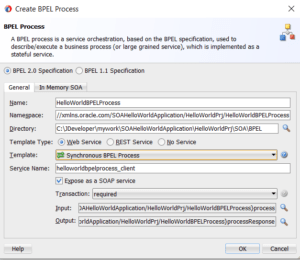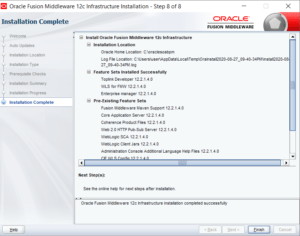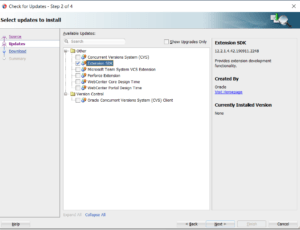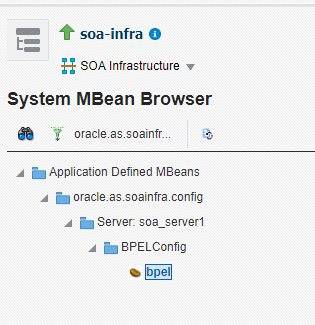The blog contains the detailing about Adapter Role in composite application, features of JCA Adapters, Adapter types, File Adapter interview questions, FTP Adapter interview questions, File / FTP Adapter configurations, File / FTP Adapter Design and Run-time properties. The blog could be helpful in the preparation of oracle SOA Suite 12c essentials 1z0-434 Certification.
Describe the adapters role in a SOA composite application ?
Oracle JCA Adapters provides the standard based integration framework for integrating SOA Services with packaged applications, legacy applications, Database systems and with other custom web services. JCA Adapters enables to integrate application running in heterogeneous environment ( services available from different vendors, running on different technologies , deployed on different environments like Unix, Linux , solaris, etc)
SOA applications with JCA Adapter integration provides a robust, lightweight, highly-scalable applications ensuring high interoperability.
Features of JCA Adapters:
- JCA Adapters provides the connectivity platform to integrate applications with mainframe and legacy applications with ERP and CRM applications, packaged applications like SAP and Siebel , databases, and messaging systems ( like Messaging Queues, Oracle Adavanced Queue).
- JCA Adapters are built on standard like J2EE Connector Architecture (JCA) version 1.5, Extensible Markup Language (XML), and Web Service Definition Language (WSDL) and reduces the dependency on a single vendor.
- SOA Composite applications integrated with JCA Adapters implements SOA Component Architecture (SOA) which provides the service details and its inter-dependencies and represent the business logic as a reusable service components.
- JCA Adapters support open standards which enables it to implement Service-Oriented Architecture (SOA) and thus provides loose coupling, flexibility, and extensibility.
- JCA Adapters provides supports integration with other back-end applications and transforms native APIs to standard XML and back. The adapters can be configured during design time to support such integrations.
- JCA Adapters provides two-way communication for supporting real-time event notifications with other back end applications like creating, updating and deleting the data. This reduces the cost of integration and provides fast & reliable integration.
- J2CA 1.5 specification in the JCA Adapters provides high scalability and availability of the Oracle Application Server platform.
- JCA Adapters provides the user interface for configuring the adapter properties during design time and helps in easy implementation and deployment activities.
- JCA Adapters provides integration with the JCA Binding component of Oracle Fusion Middleware platform and thus can be integrated with other binding components and service engines seamlessly.
Describe the JCA adapter architecture ?
The JCA Adapter integration allows to communicate with the Legacy applications, packaged applications, Databases and Oracle applications like ERP and CRM. The JCA Adapter can be classified into the below given categories:
- Oracle Technology Adapters
- Legacy Adapters
- Oracle E-Business Suite Adapters
- Packaged Applications Adapters
The below given is the High Level Architecture for JCA Adapters
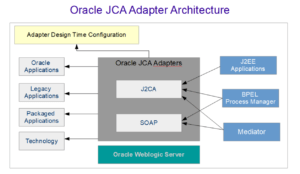
What are Oracle Technology Adapters ?
The Oracle Technology Adapters allow to integrate Oracle application Server and Oracle Fusion Middleware components like BPEL Process Manager, Mediator to File / FTP systems, Database Systems including Tables and Advanced Queue (AQ), Java Message Services (JMS) and message queues (MQ Series).
The adapters are configurations can be done using JDeveloper at the Design-time which generates JCA Binding XML Configuration files to be used by the JCA Binding Components for the seamless integration among applications.
The Oracle JCA technology adapters are deployed in the J2CA container of the Oracle WebLogic Server and alloes to integrate with JCA Binding components to convert Web service messages into J2CA interactions and vice-versa. The Oracle Fusion Middleware integrates the request-response service with a SCA composite reference and publish the adapter events to a SCA composite service.
Oracle Technology Adapters are based on J2EE Connector Architecture (JCA) 1.5 standards. These adapters are deployed as a resource adapter in the same Oracle WebLogic Server as Oracle Fusion Middleware. The connection factory details for technology adapters are updated in the weblogic-ra.xml to be read by Weblogic Server during run-time.
Oracle Technology Adapters Architecture

The below given technology adapters can be used for application integrations.
- Oracle JCA Technology Adapter for Files/FTP
-
Oracle JCA Technology Adapter for Sockets
-
Oracle JCA Technology Adapter for AQ
-
Oracle JCA Technology Adapter for JMS
-
Oracle JCA Technology Adapter for Database
-
Oracle JCA Technology Adapter for MQ Series
-
Oracle JCA Technology Adapter for UMS
-
Oracle JCA Technology Adapter for LDAP
-
Oracle JCA Technology Adapter for Microsoft Message Queueing
-
Oracle JCA Technology Adapter for Coherence
-
Oracle JCA Technology Adapter for JDE Edwards World
You can also read the below given blog on the Technology Adapter Configuration at Design -Time and other related properties.
SOA 12c DB Adapter Polling Configuration at design -time
SOA 12c DB Adapter configuration for reading table data
SOA 12c Enable Trigger File Option in File Adapter
SOA 12c File Adapter Read File Configuration at design time
What are Legacy Adapters ?
Legacy adapters integrate Oracle Application Server with legacy and mainframe applications using legacy communication protocols. The legacy adapters comprises of 3 components ( Oracle Connect, Oracle Studio and J2CA Adapters) for integration with the legacy applications.
Oracle Connect: Oracle Connect components resides in the mainframe / legacy systems and includes native adapters which help in communicating Oracle Application Server with the Legacy Systems for data exchange.
- Server Processes: includes multiple servers to process client requests
- Native Adapters: Provides various native adapters to communicate with Tuxedo and IMS-TM transaction systems, database and file systems on mainframe systems such as VSAM and IMS-DB
- Native adapters: It converts legacy applications data to XML format.
- Daemon: is an RPC-based listener deployed on legacy system and helps in managing multiple server configurations like user authentication, user authorization, connection allocation and server process management.
Repository: Oracle Connect deployed on leagacy systems provides repository for strong XML based schema and configurations like user profile to enable single sign-on, connection configurations, adapter metadata such as adapter request -response and adapter event services.

J2CA Adapter: The applications deployed on Weblogic server communicates with the Oracle Connect on legacy systems using the J2CA Adapter for the data exchange.
Oracle Studio: It provides the design-time tool for configuring Oracle AS Adapters for mainframes like configure services, configure events, adapter connection information,etc.
What are Packaged Application Adapters ?
These adapters allow to integrate Oracle Application Server with other available packaged applications like SAP , Siebel , PeopleSoft and JDEdwards.
The JCA Packaged application adapters can be deployed as J2EE Connector Architecture (J2CA) 1.5 resource adapters , or the JCA Packaged application adapters can be deployed as Web service servlets within the Oracle WebLogic Server container.
With support for J2CA interface, it also supports the Web Service Definition Language (WSDL) and Simple Object Access Protocol (SOAP) interface.
weblogic-ra.xml contains the connection name defined in the repository project as part of J2CA deployment.

Application Explorer is a Java swing-based design-time tool for configuring packaged-application adapters. Application Explorer works with BSE (Business Service Engine) and deployed in the Oracle Application Server , uses SOAP Protocol for accepting requests. The schemas can be defined as XSD, BSE or WSDL with SOAP Binding.
The below given adapter are available for integrations
-
OracleAS Adapter for PeopleSoft
-
OracleAS Adapter for SAP R/3 (availble as “out of the box” Adapters with SOA Suite 12.1.3.0)
-
OracleAS Adapter for Siebel
-
Oracle AS Adapter for J.D.Edwards EnterpriseOne and OneWorld (availble as “out of the box” Adapters with SOA Suite 12.1.3.0)
What is Oracle E-Business Suite Adapter ?
The adapter allows you to integrate Non- Oracle Applications with the Oracle ERP Product to get information related to Customers, Suppliers, Account Receivables, Financials , Oracle Reporting, etc by using Oracle E-Business Suite Adapter.
What are the types of Oracle JCA Adapter Services ?
The Oracle JCA Adapter Services can be broadly divided into 3 types:
- Request-Response (Outbound Interaction) Service : This service process the synchronous request and response data exchange.
- The adapter receives the request from the adapter client.
- Translate the request into native format
- Invoke the back end application method
- The Back end application response translates the native format to XML Standards
- The response is sent to the JCA Binding Component
- JCA Binding Component returns the response to SOA Composite reference.
2. Event Notification (Inbound Interaction) Service: This service process the asynchronous request
- An adapter registers as a listener for the back-end application
- Back-end application pushes the event to the adapter.
- The adapter sends the event notification to the adapter client.
3. Metadata Service: This service allows to browse and store metadata and a runtime component for running services like connection details, schema for business objects and services. The adapter metadata definitions are generated as XSD, WSDL and binding configuration files.
REFERENCES:
SOA 12c Oracle Technology Adapter Guide












